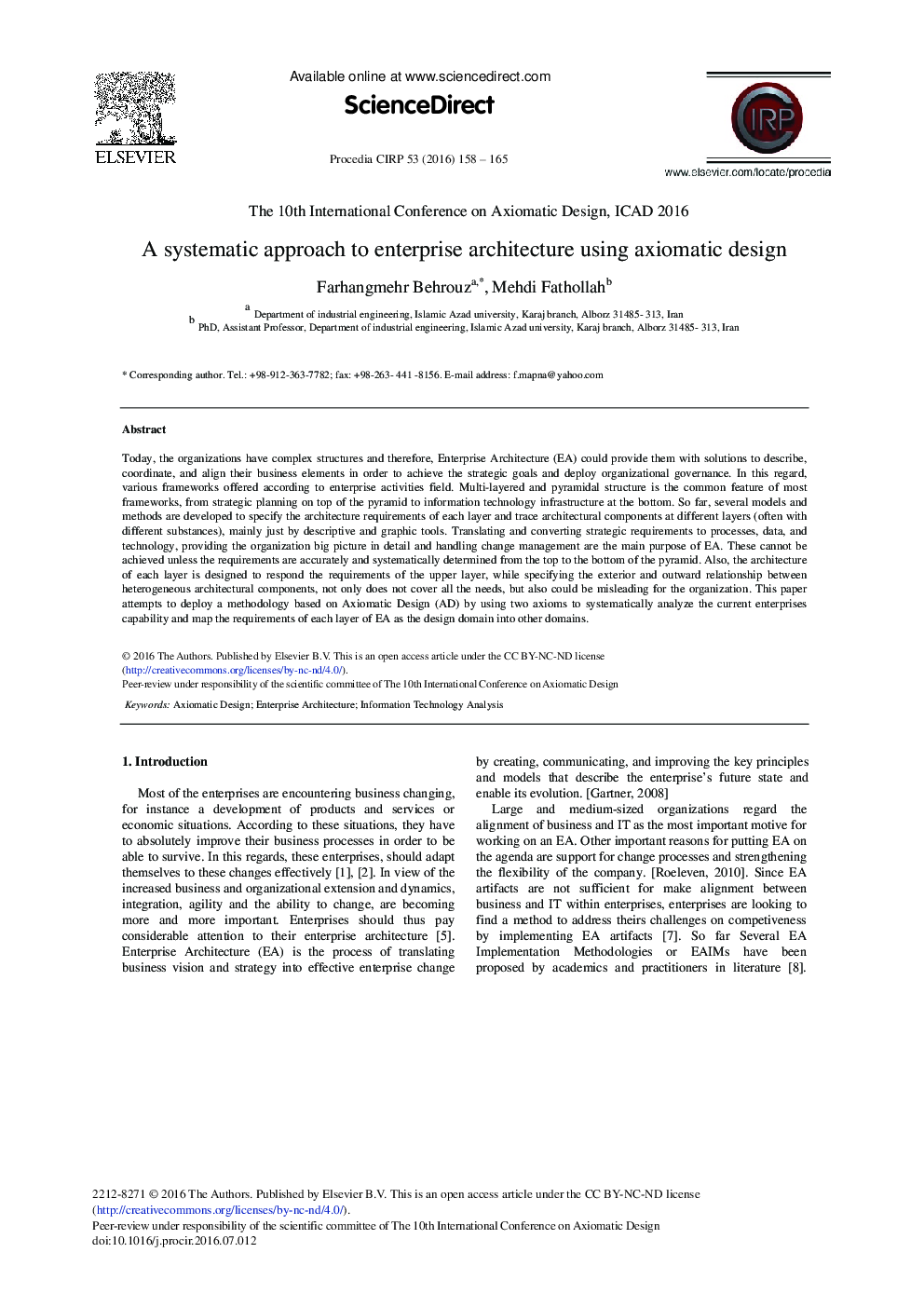| Article ID | Journal | Published Year | Pages | File Type |
|---|---|---|---|---|
| 5469910 | Procedia CIRP | 2016 | 8 Pages |
Abstract
Today, the organizations have complex structures and therefore, Enterprise Architecture (EA) could provide them with solutions to describe, coordinate, and align their business elements in order to achieve the strategic goals and deploy organizational governance. In this regard, various frameworks offered according to enterprise activities field. Multi-layered and pyramidal structure is the common feature of most frameworks, from strategic planning on top of the pyramid to information technology infrastructure at the bottom. So far, several models and methods are developed to specify the architecture requirements of each layer and trace architectural components at different layers (often with different substances), mainly just by descriptive and graphic tools. Translating and converting strategic requirements to processes, data, and technology, providing the organization big picture in detail and handling change management are the main purpose of EA. These cannot be achieved unless the requirements are accurately and systematically determined from the top to the bottom of the pyramid. Also, the architecture of each layer is designed to respond the requirements of the upper layer, while specifying the exterior and outward relationship between heterogeneous architectural components, not only does not cover all the needs, but also could be misleading for the organization. This paper attempts to deploy a methodology based on Axiomatic Design (AD) by using two axioms to systematically analyze the current enterprises capability and map the requirements of each layer of EA as the design domain into other domains.
Related Topics
Physical Sciences and Engineering
Engineering
Industrial and Manufacturing Engineering
Authors
Farhangmehr Behrouz, Mehdi Fathollah,
